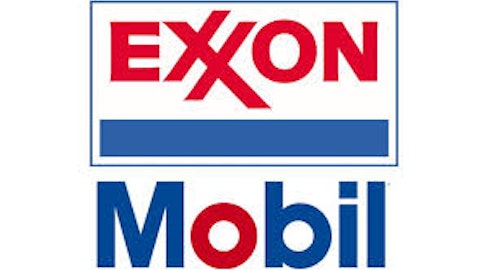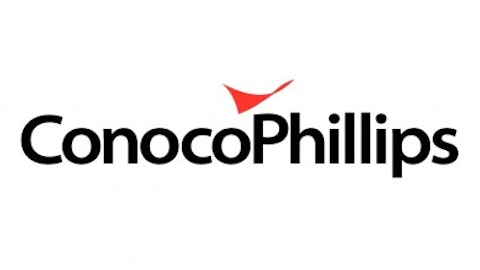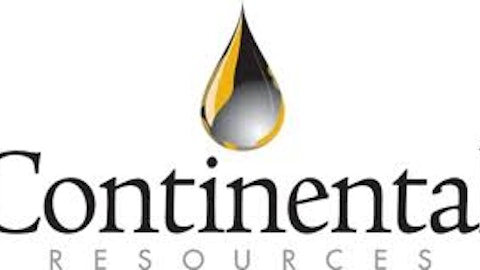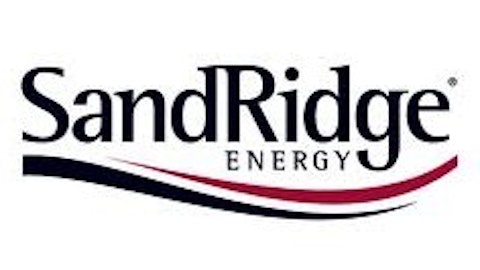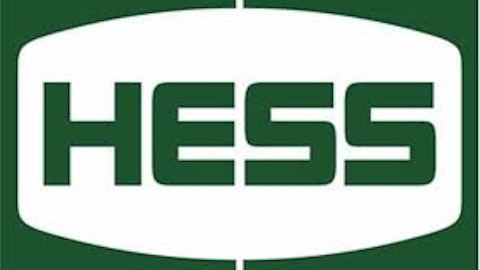The spike in shares of Chesapeake Energy Corporation (NYSE:CHK) might suggest the company is slowly regaining investors’ confidence. The sharp rise in the price of oil and the high price of natural gas compared to last year may have contributed to this company’s recovery. But other leading oil and gas producers such as Exxon Mobil Corporation (NYSE:XOM) haven’t done as well in the stock market as Chesapeake has. Thus, I think that other factors pulled up Chesapeake Energy Corporation (NYSE:CHK) ’s stock in recent weeks. Let’s examine these factors that contributed to Chesapeake Energy Corporation (NYSE:CHK)’s stock and also analyze if this company is on the right course.

Natural-gas market is cooling down
The price of natural gas is much higher than last year’s price, which may have contributed to the rise in Chesapeake Energy Corporation (NYSE:CHK)’s profit margin and revenue growth during the first quarter of 2013. The high price of natural gas is also likely to keep this trend in the coming quarters.
During the second quarter of 2013, the average price of natural gas was $4.02/mcf compared to an average sales price of $2.36/mcf last year. This means, the average price in 2013 was more than 70% higher than last year’s price. Even if the ratio of realized-price-to-market-price is 60% — Chesapeake Energy Corporation (NYSE:CHK)’s natural-gas sale price could be around $2.41/mcf, which is higher than last year’s price by 22%.
Nonetheless, Chesapeake Energy Corporation (NYSE:CHK)’s natural-gas operations account for less than 40% of its oil and gas revenue – last year this percentage was nearly 50%. The drop in natural gas’ share from total revenue is related to the company’s sales of natural- gas-related companies and operations and the sharp rise in sales from marketing and gathering. Therefore, natural gas will have a diminished effect on revenue in the coming quarters.
The rise in natural gas prices is likely to also slightly positively affect the bottom line of Exxon Mobil Corporation (NYSE:XOM). But ExxonMobil had a drop in its natural-gas production in the first quarter by 1.5%. If this trend persists, it could cancel out the rise in the price of natural gas. Moreover, the natural-gas operations account for only 5% of the company’s total revenue. Therefore, the impact of natural gas will be insignificant.
According to the U.S Energy Information Administration, natural-gas consumption in the residential/commercial sector slightly increased in recent weeks even though the weather continues to heat up. The demand for natural gas in the power sector is lower than last year most likely because the price of natural gas is higher this year compared to the low price in 2012. The total demand for natural gas in the first four months of 2013 was up 5.7% compared to the same time last year.
This rise should also pull up the revenue of natural-gas companies such Northeast Utilities System (NYSE:NU) . The company’s revenue grew by more than 81% in the first quarter of 2013. Moreover, the company’s operating profit margin rose from 19.5% to 21%. Part of the growth in revenue was related to the company’s merger with NSTAR. But the main reason for the rise in revenue was related to the spike in sales in natural-gas distribution and electric distribution and generation segments. The ongoing rise in natural-gas consumption in the residential/commercial sector and high natural-gas price (compared to last year) are likely to keep fueling this company’s rise in revenue and profit margins in the coming quarters.
Oil market continues to heat up
The spike in oil prices in recent weeks is likely to pull up the revenue of Chesapeake and Exxon Mobil Corporation (NYSE:XOM) in the coming quarters: If the price of oil remains at its current level of around $107, the quarterly price will be roughly 17% higher than the price of oil in the third quarter of 2012. Therefore, the quarterly revenue of Exxon Mobil Corporation (NYSE:XOM) and Chesapeake could sharply rise in the third quarter of 2013.
Exxon Mobil Corporation (NYSE:XOM)’s drop in production of oil and natural gas reflected in its drop in earnings in both the upstream and downstream segments. If not for the sharp rise in chemical earnings by 62%, the company’s earnings would have plummeted. Looking forward, the company increased its capital and exploration expenditures by 34% and 38% in the upstream and downstream segments, respectively. This will help the company reach growth in sales in the years to follow.
Chesapeake
’s financial situation is improving
The company has also recently sold assets in the Northern Eagle Ford Shale and Haynesville Shale for nearly $1 billion, which brings it to $3.6 billion in asset sales. This will enable the company to increase its capital expenditure and pay off part of its loans. These steps have also helped regain the confidence of investors in the company.
Even though Chesapeake is making great strides towards improving its financial situation, the company still has a long way to go: Its debt-to-equity ratio is still very high compared to other leading oil and gas companies: Chesapeake’s current ratio is 0.9; Exxon Mobil Corporation (NYSE:XOM)’s ratio is only 0.1.
Nonetheless, the sharp rise in Chesapeake’s stock price didn’t make the stock overpriced compared to the industry and other oil and gas companies.
In the table below, I have used Chesapeake and ExxonMobil’s enterprise value and their EV-to-EBITDA ratios.

As seen,
Chesapeake’s EV-to-EBITDA ratio is close to the industry average and to ExxonMobil’s price. These findings suggest, at face value, that Chesapeake’s stock price isn’t too high for the industry and other oil and gas companies.
The bottom line
I think Chesapeake is on the right course and the actions taken by its management are enabling the company to improve its financial situation and also keep its high capital expenditure towards new projects. I still think the company will need to further cut down its natural-gas operations and invest more in oil projects. Moreover, the recent rally didn’t put Chesapeake’s valuation above the industry’s average or the average of other oil and gas companies. Therefore, I think this company could be an interesting investment worth considering.
Lior Cohen has no position in any stocks mentioned. The Motley Fool has the following options: long January 2014 $20 calls on Chesapeake Energy, long January 2014 $30 calls on Chesapeake Energy, and short January 2014 $15 puts on Chesapeake Energy. Lior is a member of The Motley Fool Blog Network — entries represent the personal opinion of the blogger and are not formally edited.
The article Is This Gas Producer Regaining Investors’ Confidence? originally appeared on Fool.com is written by Lior Cohen .
Copyright © 1995 – 2013 The Motley Fool, LLC. All rights reserved. The Motley Fool has a disclosure policy.
